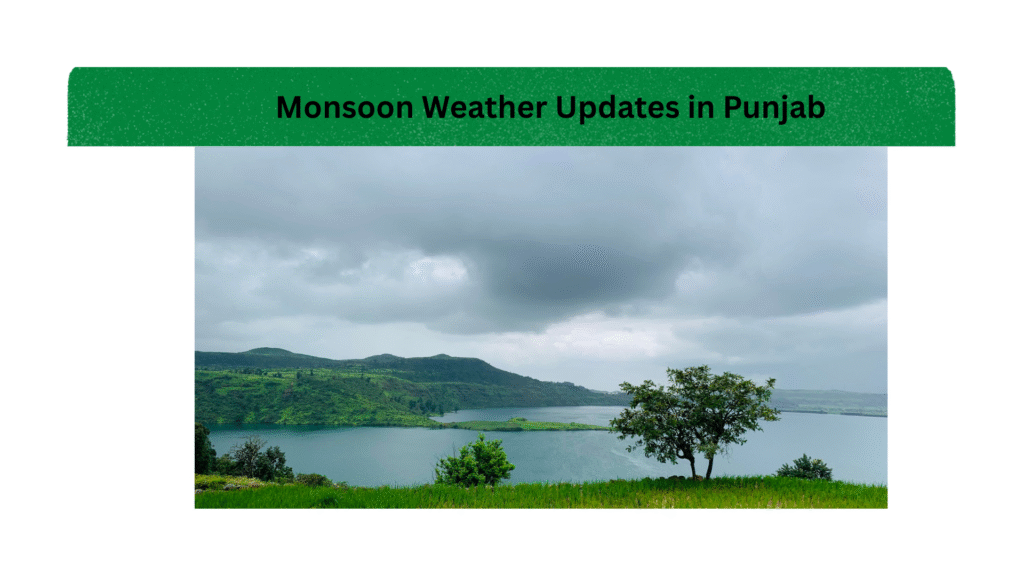
Monsoon season sweeps across Punjab every year with a mix of hope and worry. From the joy of cool breezes after weeks of rising heat, to the anxious eyes cast on swelling rivers, this season shapes daily life for millions. Farmers watch the skies hoping for the right amount of rain, while city dwellers brace for sudden storms that can turn streets into rivers.
Understanding when the monsoon arrives, what it means for crops and cities, and where to find reliable weather updates isn’t just helpful—it can make a real difference for families, business owners, and anyone with roots in Punjab. Keeping up with monsoon forecasts helps local communities plan ahead, protect crops, and stay safe from seasonal flooding.
Understanding the Monsoon Season in Punjab
Punjab sits at the heart of Pakistan, with long, hot summers that finally break when the South Asian monsoon arrives. This seasonal shift brings much-needed rain but also carries the risk of flash floods and waterlogging.
The South Asian monsoon is a large-scale weather pattern. It pulls moisture-loaded winds from the Indian Ocean over land, delivering steady rain from late June through September. For Punjab, these rains are vital—they fill rivers, recharge groundwater, and give life to rice, cotton, and sugarcane crops. Yet, too much rain too fast can damage homes, roads, and harvests.
Rain usually starts in southern Punjab first, then spreads north and west. The entire region braces for sudden weather swings, with hot, dry spells interrupted by thunder, gusty winds, and downpours that can last for hours.
Key Factors Driving the Monsoon in Punjab
Monsoon patterns aren’t random. They depend on a few main weather drivers:
- Intertropical Convergence Zone (ITCZ): This weather belt, shifting north in summer, draws moist winds from the sea toward the land.
- Western Disturbances: These weather systems roll in from the west, mixing with monsoon winds and sometimes triggering heavy rain in upper Punjab.
- The Himalayas: Punjab’s northern edge touches these mighty mountains, forcing moist air to rise and cool, which triggers rainfall over the plains.
All these factors combine to create erratic rain—some towns might flood while others stay dry. Local geography, like hills and river channels, also affects where rain falls most.
Monsoon Timeline and Average Rainfall for Punjab
Every year, meteorologists track when the monsoon hits and how much rain to expect.
- Onset: Most years, the first showers touch southern and central Punjab by late June or early July.
- Peak: July and August see the heaviest rainfall, often with back-to-back days of storms.
- Retreat: By late September, skies clear, and cooler winds signal the end of the season.
Here’s what history shows:
- Average Rainfall: Punjab receives between 250 to 600 mm of rainfall during the monsoon, but this can swing dramatically depending on weather patterns.
- Regional Variations:
- Northern Punjab (Rawalpindi, Sialkot): Often gets heavier downpours, sometimes double the rainfall seen in the south.
- Central Punjab (Lahore, Faisalabad): Experiences moderate rain, enough to feed crops but still posing flood risks in low-lying areas.
- Southern Punjab (Multan, Bahawalpur): Receives less rain overall, but even a short, intense spell can create challenges.
These patterns highlight why regular weather updates matter. A storm in Sialkot might leave Multan dry, while unexpected rain in the south can catch farmers off guard.
How to Access and Interpret Monsoon Weather Updates
Timely, accurate weather updates help everyone—farmers, teachers, doctors, shopkeepers—make better decisions. Knowing where to get updates and what the terms mean is as important as the rain itself.
Reliable Sources for Monsoon Forecasts
Not all forecasts carry the same weight. Trust the experts and cross-check different sources for the best picture:
- Pakistan Meteorological Department (PMD): The top authority for weather data, PMD updates forecasts daily and issues special monsoon alerts on their website and social media.
- Local Radio and TV: These stations quickly relay government warnings and often offer updates in local languages.
- Smartphone Apps: Apps like AccuWeather, Weather.com, and the official PMD app help track changes from anywhere.
- Community WhatsApp and SMS Alerts: Many district administrations send warnings and rainfall figures directly to your phone.
When checking updates, always look for the time of the last forecast, the area covered, and if there’s a warning attached.
Understanding Weather Alerts and Forecast Language
Weather agencies use simple terms to signal what’s coming. Here’s how to read between the lines:
Common Words in Monsoon Forecasts:
- Light Rain: Scattered showers, usually not enough to cause flooding.
- Moderate Rain: Widespread rainfall, can cause water pooling in low-lying areas.
- Heavy Rain: Prolonged downpours, higher risk of flooding and disruption.
- Very Heavy Rain: Severe conditions, stay alert for flash floods and official warnings.
- Thunderstorm/Lightning: Risky outdoor conditions; avoid open fields and water bodies.
Types of Alerts:
- Watch: Conditions are right for severe weather, but nothing is certain yet. Be ready.
- Warning: Hazardous weather is about to happen or is already happening. Act quickly.
When you see a flood warning, move to safe ground and follow official routes. For urban flash floods, stay away from low underpasses, basements, and avoid driving through standing water.
Tips for Interpreting Updates:
- Check multiple sources for confirmation.
- Focus on your local area.
- Act early if you farm or live near rivers.
Conclusion
Monsoon season in Punjab brings relief, hope, and sometimes real danger. By staying updated with reliable weather forecasts, residents and farmers can plan ahead, protect their homes and families, and reduce the risks of sudden storms and floods.
Remember these key points:
- Track official updates daily.
- Understand the common weather terms and alerts.
- Prepare early, especially if you live in flood-prone areas or depend on crops.
Following these steps helps protect what matters most. Let the season bring new life, not unwanted trouble. Stay informed, stay prepared, and help your community make it safely through every monsoon.
